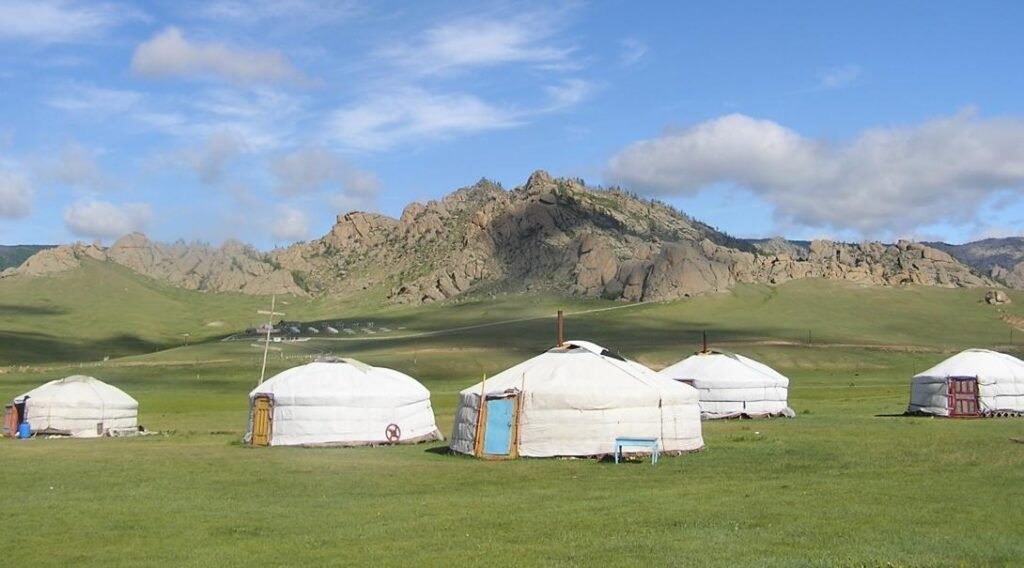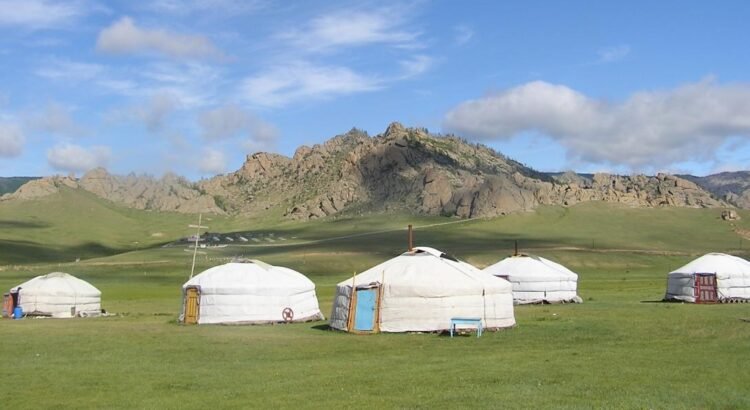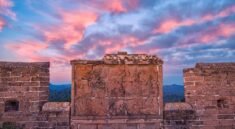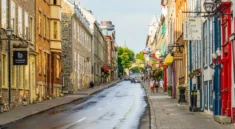
In a world increasingly dominated by noise, speed, and digital overstimulation, the idea of slowing down — truly slowing down — can feel like a radical act. Yet, in the vast, wind-brushed lands of the Central Asian steppe, there is a way of life that has remained grounded in simplicity, rooted in nature, and deeply human. Living with nomads offers more than just a travel experience — it offers a way to reconnect with life itself.
The open steppe stretches for miles in every direction — a sea of grasslands under an ever-changing sky. It is a landscape that feels both eternal and untouched, where herds of horses gallop freely, yurts stand resilient against the wind, and the rhythms of the earth dictate the rhythms of life. To live with nomads here is to shed the layers of complexity that modern life demands and to embrace the beauty of the basics: water, fire, food, companionship, and movement.
Arrival: The Steppe Awakens The Soul
Touching down in a place like Mongolia or Kazakhstan — two of the last strongholds of traditional nomadic life — feels like entering another dimension. Gone are the skyscrapers and superhighways, replaced by wide open skies, ancient mountains, and endless plains. The air smells of grass, horse sweat, and clean earth. The silence is not empty but full of presence.
When you first arrive at a nomadic encampment, usually made up of several gers (the Mongolian word for yurt), you are greeted with a warmth that transcends language. Hospitality is not a choice in nomadic culture; it is a sacred duty. You are not a tourist here — you are a guest, and in many ways, an honorary member of the tribe.
The Ger: A Portable Home, A Center Of Life
The ger is much more than a tent. It is a masterpiece of design, optimized over centuries to suit the nomadic lifestyle. Its circular shape ensures stability in strong winds, while the central fire serves as both a stove and a hearth. The interior is often decorated with vibrant textiles, wooden chests, and family heirlooms, telling stories of heritage and pride.
Living in a ger invites you into a space where every object has a purpose and every movement is mindful. There is no excess. Instead, there is balance. The fire is tended constantly. Tea is always brewing. Blankets are folded with care. In the mornings, sunlight seeps through the crown of the ger, gently waking its occupants. There are no alarms, only the sound of livestock and the rustle of wind.
Daily Life With The Nomads
Life with nomads is dictated by nature. The sun determines when the day begins and ends. Animals dictate the schedule. Tasks are practical, shared, and constant: herding goats and sheep, milking mares, fetching water, chopping wood, making dairy products like airag (fermented mare’s milk) and aruul (dried cheese).
At first, the labor may seem intense. But soon you begin to understand: this is a life of purpose. Every chore has meaning. Every hand contributes. There is no concept of “idle time” — not because there is no leisure, but because even rest is intentional. It is time for conversation, storytelling, music, or simply sitting and watching the sky shift from blue to gold.
Helping with herding teaches not just about animals but about patience and partnership. Horses, in particular, are revered — not as pets, but as powerful allies. Riding across the steppe on horseback, with no fences or roads in sight, you feel something ancient stir within you. A freedom modern life has almost erased.
Food: Nourishment From The Land
Meals are hearty and come directly from the land. Mutton stews, dumplings, noodles, and endless cups of suutei tsai (salty milk tea) form the staples of the diet. Nothing is wasted. Everything is appreciated. The food, though simple, is deeply nourishing — both physically and emotionally.
Cooking is communal. Kneading dough, preparing meat, and stirring the pot becomes a social ritual. Around the stove, stories are shared — often translated by gestures and smiles when language fails. You learn to appreciate the rituals of meals, not just the food. There are no rushed lunches or distracted dinners. Eating is a time to connect, reflect, and be present.
A Culture Of Deep Hospitality
Nomadic cultures are built on hospitality. In the isolation of the steppe, neighbors may be days away. So when someone visits, it is an occasion of significance. Guests are offered the best — the finest meat, the warmest spot by the fire, the softest blankets. There is no “reservation” or need to call ahead. You arrive, and you are welcomed.
This generosity is not performative. It is deeply sincere, born of a worldview that sees everyone as interconnected. A stranger may become a friend. A guest may become family. You, the outsider, are not treated with suspicion, but with honor.
And so, slowly, the walls within you begin to fall. You learn to accept help. To offer thanks. To smile without reason. You realize how much abundance there can be in a life with few possessions — because what matters is shared: food, warmth, stories, and time.
Living By The Elements
Life on the steppe means surrendering to the elements. The wind howls without warning. The nights are cold, even in summer. Storms roll in like wild animals. But instead of resisting, the nomads adapt. They read the skies like scriptures. They know when to move, when to wait, when to act.
This intimacy with nature is perhaps the most profound lesson. As you fetch water from a distant well or gather dung for fuel, you begin to see the earth not as a resource to exploit, but as a living partner. You gain respect for every drop of water, every stick of firewood. Gratitude becomes your default mode.
Evenings on the steppe are magical. As the sky erupts in stars — unhindered by city lights — you feel smaller and yet more connected than ever. The Milky Way stretches above you like a bridge to the infinite. Beside the fire, someone may begin to sing — a deep, throaty melody that seems to rise from the land itself.
Disconnecting To Reconnect
There is no Wi-Fi here. No Instagram updates, no emails, no pings or rings. At first, this might feel jarring. But then, something else happens: you begin to hear — really hear — the world around you. The wind in the grass. The breathing of animals. The rustling of fire. And most of all, the quiet within yourself.
Without screens, conversations deepen. Without distractions, moments expand. You start to notice things: the textures of fabric, the way light dances on a pot of tea, the patterns of clouds moving overhead. Life becomes vibrant, not in pixels, but in presence.
Most importantly, you begin to remember. Who you are. What matters. What you need — and what you don’t. The steppe, in all its openness, becomes a mirror. It reflects not only the vastness of the world but the spaciousness that still exists within your own being.
The Wisdom Of Slowness
In nomadic life, nothing is hurried. There is no rush to finish a task or check a box. The day flows organically, guided by weather, animals, and instinct. This pace may feel unfamiliar to someone raised in the metrics of time and output. But it is healing.
You learn to walk slowly. To eat slowly. To listen fully. The future and past loosen their grip, and what remains is the present — full, textured, and alive. Simplicity, you realize, is not about lacking. It is about choosing. Choosing presence over productivity. Choosing connection over consumption.
Farewell: Leaving, But Not Losing
Eventually, your time with the nomads must come to an end. The goodbye is often quiet — a nod, a hug, a small gift pressed into your hand. You leave behind the ger, the horses, the fire. But you take something far more valuable with you.
You return not just with photographs but with a shift in your being. A newfound clarity. A quieter mind. A softer heart. You find yourself questioning the chaos of your previous routines. You crave less. You listen more. And sometimes, in the middle of your modern life, you’ll close your eyes and feel the steppe wind again.
A Timeless Lesson
To live with nomads is not to escape the world but to rediscover it — and yourself. It is a journey back to what is essential, meaningful, and real. In a landscape that seems empty, you find fullness. In a life that seems simple, you find depth.
The steppe doesn’t give answers in words. It teaches by being. And its greatest lesson is this: you do not need much to live well. Just space to breathe, hands to work, hearts to share, and the courage to move with the rhythms of life.
So if the world feels too much, too fast, too noisy — perhaps the steppe is calling you. Not as a tourist, but as a pilgrim in search of truth. Accept the invitation. Live with nomads. And let simplicity remind you of everything you’ve forgotten, but have always known.




